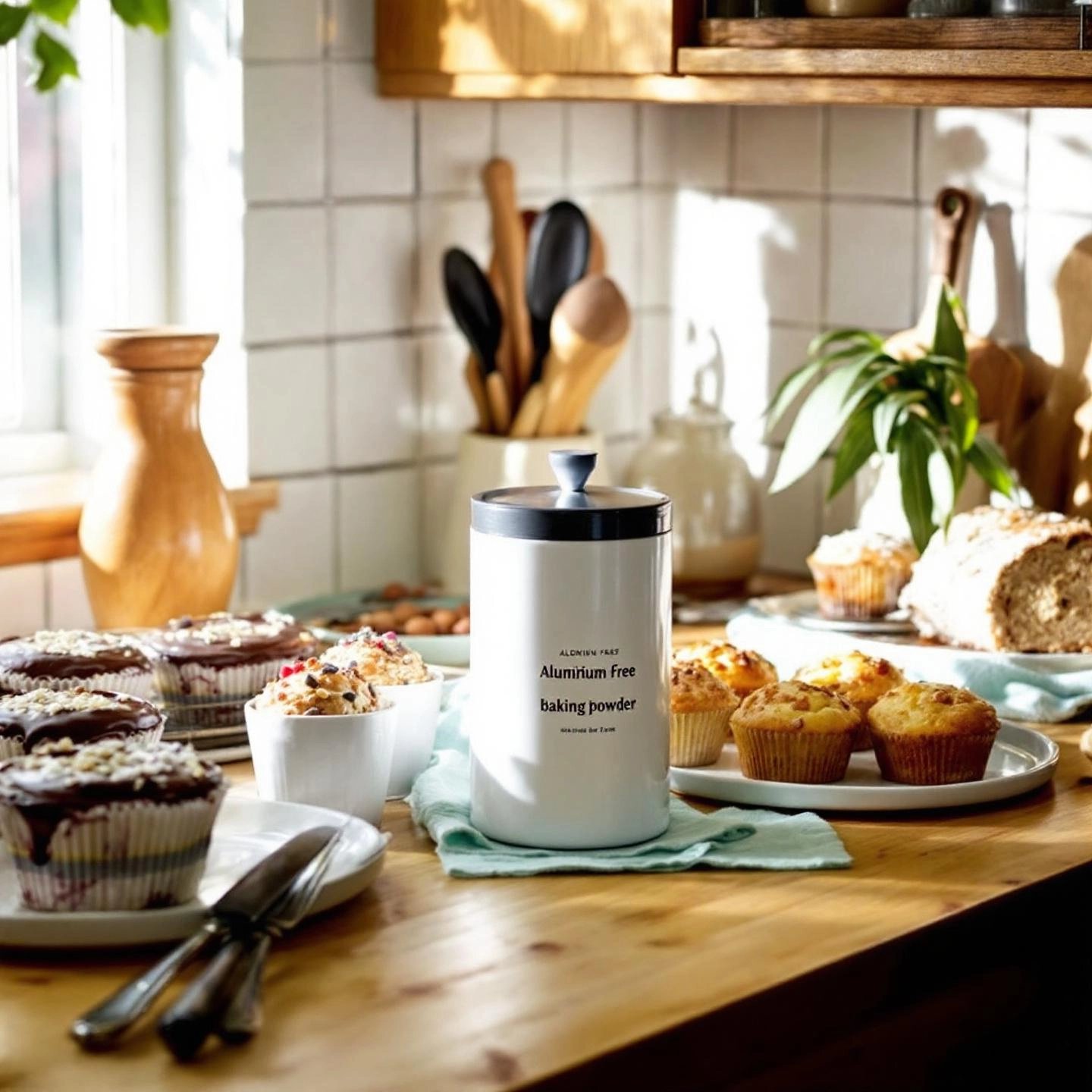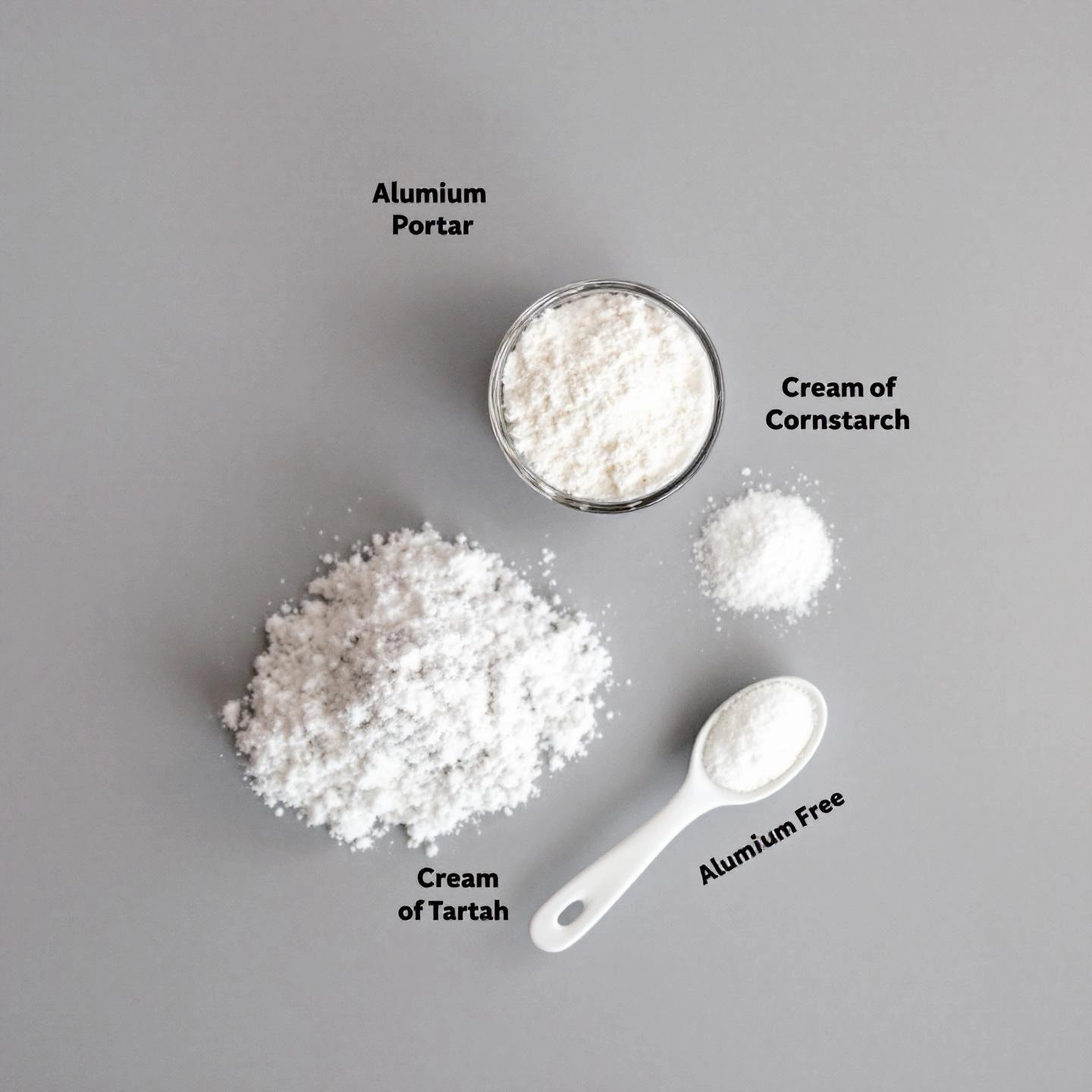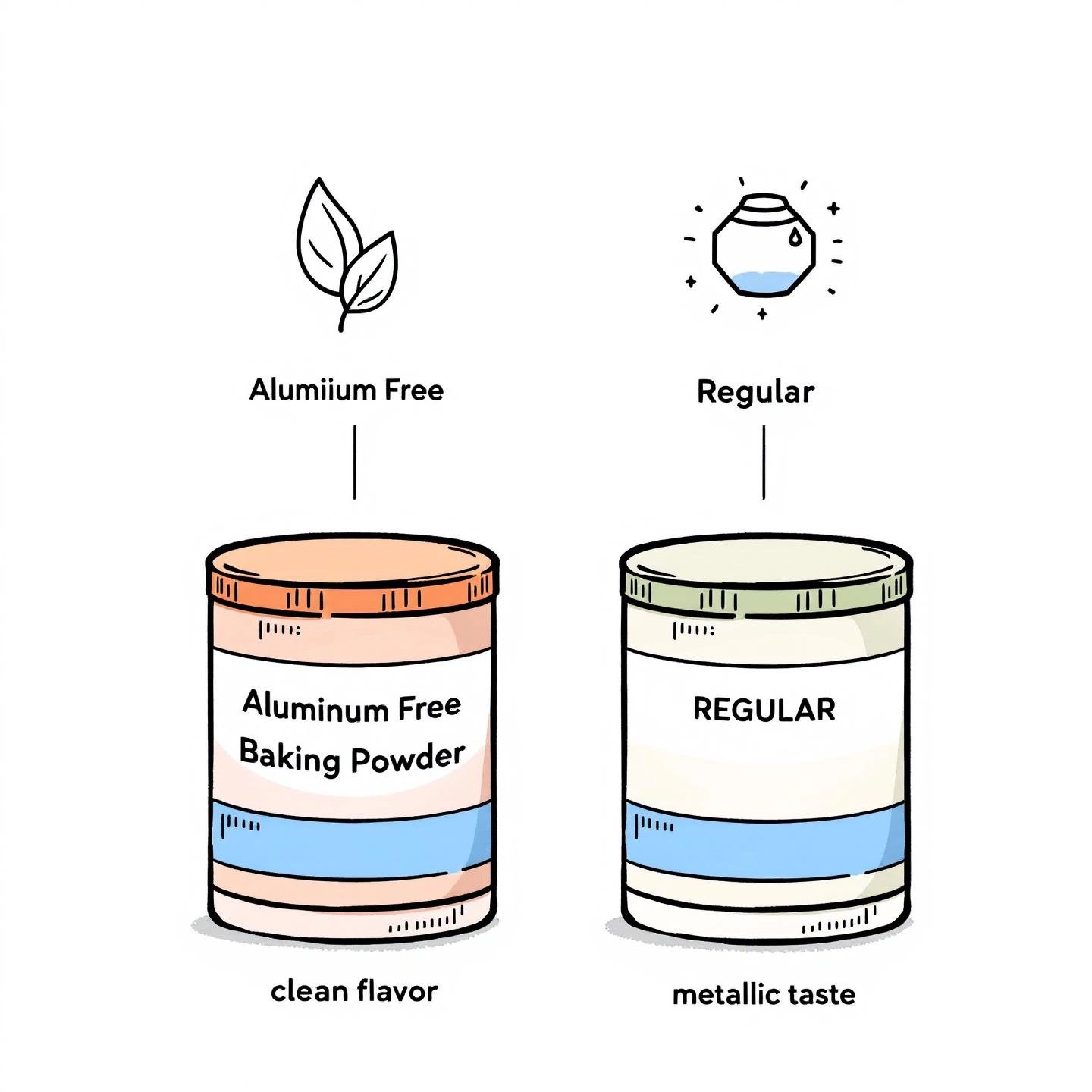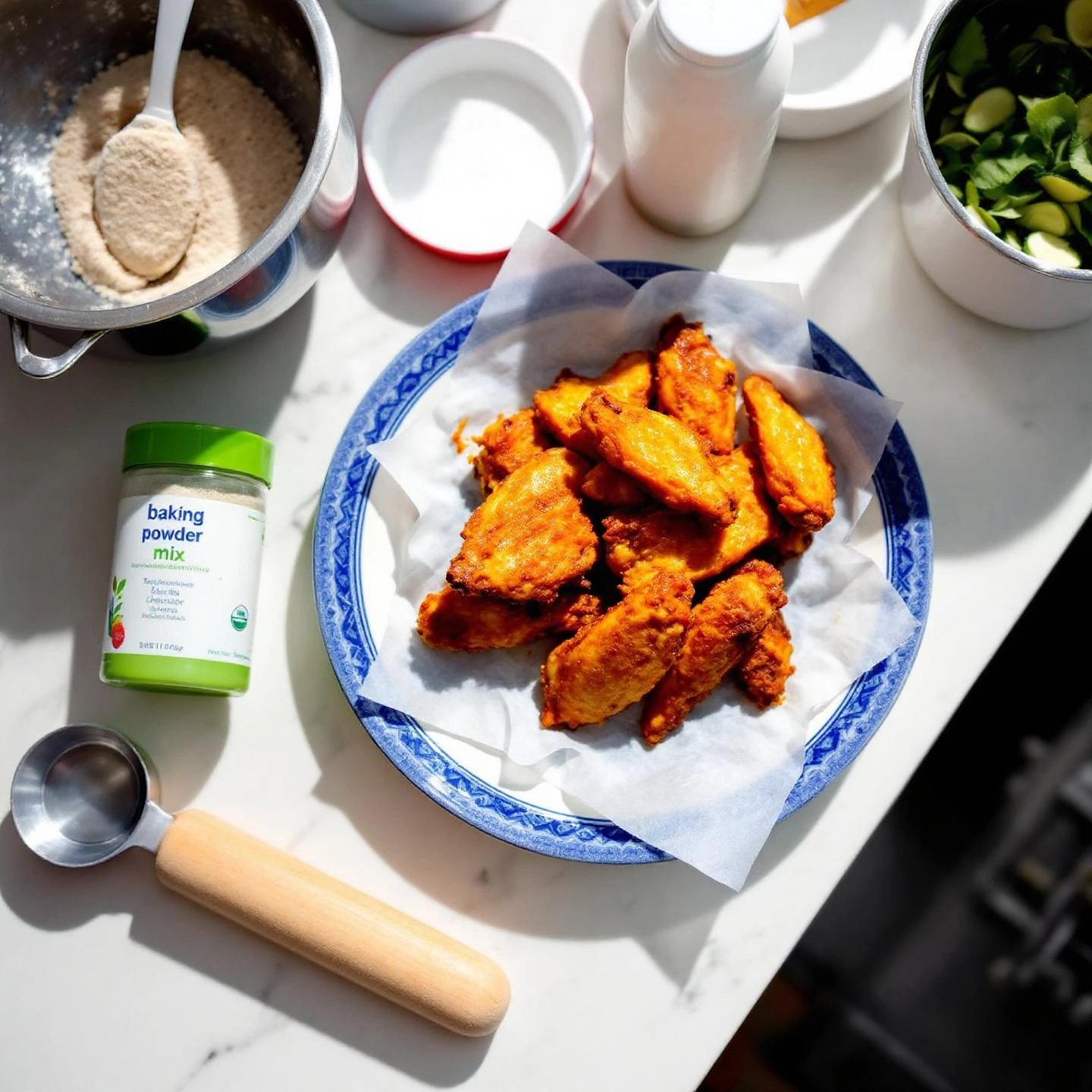
Have you ever wondered why some home bakers are making the switch to aluminum free baking powder? Imagine pulling a golden cake from the oven, only to discover a subtle metallic aftertaste. For many, this scenario sparked a search for cleaner, better-tasting alternatives—and that’s where aluminum-free options shine.
Once considered a specialty product, aluminum free baking powder is now a staple in kitchens across the country. Its rise in popularity isn’t just a passing trend. Instead, it reflects a larger movement: consumers are reading ingredient labels more carefully and seeking out products that align with their health and wellness goals. According to recent market research, the demand for aluminum-free baking powder is surging, driven by health-conscious shoppers and the growing popularity of home baking. This shift is especially notable as more people look for clean-label products with simple, recognizable ingredients [Source].
So, what is aluminum free baking powder, and why does it matter? In this comprehensive guide, we’ll break down:
Whether you’re a seasoned baker or just starting out, this guide will help you make informed choices and enjoy delicious, worry-free baked goods. Let’s dive in and discover why aluminum free baking powder deserves a spot in your kitchen.

Ever looked at a recipe and wondered what makes your cakes rise so perfectly? The answer often lies in baking powder—a small but mighty ingredient with a fascinating chemistry. But when comparing aluminum-free baking powder vs baking powder with aluminum, what sets them apart? Let’s break it down in simple terms.
Baking powder is a chemical leavener—its job is to create bubbles of carbon dioxide that help baked goods puff up and become light and tender. It’s made of three main components:
When liquid hits the powder, a chemical reaction produces carbon dioxide gas, causing your batter or dough to rise.
The main distinction between aluminum-free and regular baking powder is the type of acid used. Here’s how they differ:
| Type | Common Acid Ingredients | Notes |
|---|---|---|
| Aluminum-Free |
|
No sodium aluminum sulfate or sodium aluminum phosphate |
| Regular (with Aluminum) |
|
Aluminum compounds help with delayed reaction |
Why does this matter? The type of acid affects both the taste and how quickly your baked goods rise. Aluminum-containing acids can sometimes leave a metallic or bitter aftertaste, especially if you use too much powder. With aluminum-free versions, you’ll notice a cleaner flavor profile.
Ever wondered about single-acting vs double-acting baking powder? The acid type also determines how and when the powder reacts:
In summary, understanding the science behind aluminum-free baking powder empowers you to choose the right product for your recipes and baking style. Next, let’s explore why so many bakers are making the switch to aluminum-free options—and what benefits you can expect in your kitchen.
Ever bitten into a biscuit or muffin and noticed a strange, metallic aftertaste? If so, you’re not alone. Many home bakers have experienced this disappointment, only to discover that the culprit was baking powder containing aluminum-based acids. But what exactly are the benefits of aluminum free baking powder, and why are more people making the switch?
Imagine serving a batch of scones or a delicate sponge cake, only to have the flavors overshadowed by a bitter, tinny note. This offputting taste is often linked to baking powders containing sodium aluminum phosphate or sodium aluminum sulfate. These compounds are added to create a delayed, heat-activated rise, but they can leave behind a metallic flavor—especially in recipes that use a larger quantity of baking powder or have subtle flavors (Epicurious). When you switch to an aluminum-free option, you’ll notice your baked goods taste cleaner and more true to the intended recipe, allowing buttery, fruity, or spiced notes to shine through.
While scientific research has not established a definitive link between dietary aluminum from baking powder and health risks, many consumers prefer to err on the side of caution. Choosing aluminum-free baking powder is a simple, effective way to reduce your exposure to unnecessary additives, especially if you’re baking frequently or have concerns about ingredient purity. For those who are sensitive to metallic flavors or simply want a cleaner ingredient list, this switch offers peace of mind without sacrificing performance in the kitchen.
In short, making the move to aluminum-free baking powder is a small change with noticeable rewards. Next, let’s take a closer look at how these options stack up side-by-side with traditional baking powders, so you can make the best choice for your pantry and your palate.

When you’re standing in the baking aisle, do you ever wonder: Is there really a difference between aluminum-free and regular baking powder? If you’ve noticed a metallic tang in your muffins or a bitter note in your pancakes, you’re not alone. Understanding the subtle yet important distinctions between these two types can help you achieve the best results in your kitchen. Let’s break it down side by side.
| Feature | Aluminum-Free Baking Powder | Regular Baking Powder (with Aluminum) |
|---|---|---|
| Common Acid Ingredients | Monocalcium phosphate, sodium acid pyrophosphate (sometimes), cream of tartar (in homemade blends) | Sodium aluminum sulfate, sodium aluminum phosphate, monocalcium phosphate (often combined) |
| Activation Method | Usually single-acting (reacts with liquid); some double-acting brands available | Typically double-acting (reacts with liquid and again with heat) |
| Taste Profile | Clean, neutral flavor; unlikely to cause metallic or bitter aftertaste | Can impart a metallic or bitter taste, especially if overused |
| Best Use Cases | Recipes where subtle flavors matter (e.g., vanilla cakes, scones, shortbread), gluten-free and egg-free baking | Recipes where delayed rise is beneficial (e.g., thick batters, some commercial applications) |
| Forgiveness in Timing | Less forgiving—bake soon after mixing for best rise | More forgiving—delayed reaction allows for longer stand time before baking |
| Ingredient Transparency | Preferred by those seeking clean-label or minimal-ingredient products | May contain additives some consumers wish to avoid |
Choosing between aluminum-free and regular baking powder is a lot like selecting the right material for a high-precision project. Just as bakers rely on quality ingredients to achieve consistent, delicious results, manufacturers depend on the purity and consistency of their materials to ensure the highest standards in their products. For example, in the world of industrial manufacturing, companies like Shengxin Aluminum set the bar for precision and quality—ensuring every profile meets strict performance criteria. In your kitchen, picking the best aluminum-free baking powder is your way of ensuring every batch comes out just as you intended: flavorful, light, and free from any unwanted aftertaste.
Now that you know how these baking powders stack up, let’s explore which brands have earned a reputation for quality and reliability. This way, you can confidently choose the best aluminum-free baking powder for your next baking adventure.
When you’re standing in the baking aisle, the sheer number of choices can feel overwhelming. Which aluminum free baking powder brands actually deliver on taste, quality, and reliability? Let’s break down the most trusted names so you can confidently choose the best aluminum free baking powder for your kitchen.
Each brand brings something unique to the table—whether it’s a legacy of quality, a commitment to clean ingredients, or widespread availability. Here’s what you need to know:
| Brand | Key Features | Why Bakers Love It |
|---|---|---|
| Rumford | Classic, all-purpose; always aluminum-free; double-acting | Consistently delivers tall, tender cakes and clean flavor; widely recommended for home bakers |
| Argo | Double-acting; gluten-free; made in the USA | Reliable rise in a variety of recipes; favored for its versatility and performance |
| Bob's Red Mill | Gluten-free; vegan; made with clean-label ingredients | Great for those with food allergies or dietary restrictions; delivers a neutral, clean taste |
| Trader Joe's | Store brand, aluminum-free; affordable | Easy to find in-store; praised for value and performance in everyday baking |
| Clabber Girl | Offers both regular and aluminum-free options | Well-known for reliability; check the label to confirm aluminum-free version |
| Davis Baking Powder | Classic American brand; aluminum-free formula | Trusted for generations; simple ingredient list |
Choosing the right brand is a lot like selecting quality materials for a project—attention to detail ensures the best results. Now that you know which brands bakers trust most, let’s take a closer look at what makes Rumford and Argo stand out in the next section.
When it comes to choosing a reliable aluminum free baking powder, two names consistently rise to the top: Rumford and Argo. But what sets these brands apart, and how do they perform in real-world baking scenarios? Let’s break down their unique strengths so you can decide which is best for your kitchen.
Ever noticed how some cupcakes dome beautifully while others fall flat? The secret often lies in your choice of leavener. Rumford aluminum free baking powder is a classic favorite among home bakers and professionals alike. Its formula is always aluminum-free, using monocalcium phosphate and non-GMO cornstarch. What makes Rumford stand out is its quick, reliable activation. In side-by-side tests, Rumford’s original formula produced a pronounced flavor and a tender, well-textured crumb—making it ideal for recipes where both taste and rise matter most.
Looking for a leavener that gives you a little more time to work? Argo aluminum free baking powder is a double-acting, aluminum-free option that offers flexibility for busy bakers. Its formula includes sodium acid pyrophosphate, monocalcium phosphate, and cornstarch. What does this mean for your baking? Argo activates partially with liquid, but most of its lift happens in the oven’s heat. This delayed reaction is especially handy for larger batches or recipes that require resting before baking.
Imagine having the right tool for every job—whether you want a fast, immediate rise or a little extra working time. Rumford and Argo give you that flexibility. Next, we’ll explore where to find organic aluminum-free baking powder options and how to source them, so you can match your baking values with your ingredient choices.

Ever found yourself searching for organic aluminum free baking powder near me and wondering what truly makes a baking powder organic? If you’re aiming for the cleanest, most natural ingredients in your home baking, understanding the difference can help you make the best choice for your pantry—and your peace of mind.
Organic baking powder goes beyond simply being aluminum-free. For a product to be labeled organic, each ingredient—whether it’s the starch, acid, or base—must be sourced from certified organic agriculture. This means:
For example, an organic aluminum free baking powder might use organic corn starch, organic cream of tartar, and baking soda—ensuring every component meets rigorous standards for purity and sustainability.
Wondering where to buy these specialty products? The good news is, organic options are more accessible than ever. Here’s where you can look:
When in doubt, check the ingredients and look for third-party organic certification. This ensures you’re getting a product that meets the highest standards for both quality and sustainability.
Imagine sourcing ingredients for your favorite cake—the quality of each component can make or break the final result. The same principle applies in the world of manufacturing, where companies like Shengxin Aluminum set the standard for excellence by carefully selecting and processing their raw materials. Just as bakers trust reputable suppliers for pure, organic baking powder, industries rely on trusted partners to deliver consistent, high-quality results. Choosing wisely—whether for your pantry or your next big project—ensures peace of mind and superior outcomes.
Now that you know where and how to find organic aluminum free baking powder, let’s turn to practical tips for using these products to achieve perfect results in your own kitchen.
Ever mixed up a beautiful batter, only to find your biscuits or cakes come out flat or dense? If you’ve switched to aluminum free baking powder, you might wonder if there’s a secret to getting tall, fluffy results every time. The answer comes down to a few simple techniques—and a little bit of kitchen chemistry.
When it comes to how to use aluminum free baking powder, the most important thing to remember is that it often reacts immediately with liquid. Unlike some traditional double-acting powders, which give you a second rise in the oven, most aluminum-free options start working as soon as they’re mixed into your wet ingredients. This means you’re on a bit of a timer: mix, shape, and bake promptly to capture all those precious bubbles that make your baked goods rise.
Imagine you’re in a Southern kitchen, mixing up biscuit dough with buttermilk and aluminum-free powder. The moment those ingredients meet, the clock is ticking—and your reward for moving swiftly is a batch of sky-high, tender biscuits. Keep these tips in mind, and you’ll notice a real difference in your baking results. Next, let’s explore some creative uses and smart substitutions for aluminum-free baking powder, so you’ll never be caught off guard when your canister runs low.

Ever wondered if your pantry staple could do more than just lift cakes and muffins? Let’s dive into the creative side of aluminum free baking powder, from making irresistible chicken wings to whipping up a substitute in a pinch.
Picture this: you pull a tray of oven-baked chicken wings from the oven, and they’re just as crispy as your favorite takeout—no fryer required. What’s the trick? It’s not flour or breadcrumbs, but a light dusting of aluminum free baking powder for chicken wings. Here’s why it works:
For best results, toss about one teaspoon of baking powder per pound of wings with your favorite spices and bake promptly. You’ll be amazed at the restaurant-quality texture—no deep-frying necessary.
What if you’re halfway through a recipe and realize you’re out of baking powder? Don’t panic! You can easily make a homemade aluminum free baking powder substitute with two common ingredients:
For example, to make 3 tablespoons of baking powder, simply mix 1 tablespoon of baking soda with 2 tablespoons of cream of tartar. Use immediately or store in a tightly sealed container for up to a week to maintain potency.
Homemade blends react quickly and can lose effectiveness if exposed to moisture. To ensure fluffy bakes and crisp textures, always use your substitute as soon as it’s mixed.
From transforming weeknight chicken wings to saving your favorite cake recipe, aluminum free baking powder is more versatile than you might think. Next, we’ll wrap up with a summary of its key benefits and encourage you to make the switch for cleaner, tastier results in every bake.
Have you ever wondered what truly sets a memorable bake apart from an ordinary one? Sometimes, it’s the smallest ingredient swap that makes the biggest difference. By choosing aluminum free baking powder, you’re not just following a trend—you’re making a conscious decision for superior taste and a cleaner ingredient profile in every treat you bake.
Imagine pulling a batch of muffins from the oven and tasting only the warm, buttery crumb—no harsh aftertaste, just pure, homemade flavor. That’s the real reward of making this small but important change.
Just as bakers elevate their creations by selecting premium ingredients, industries achieve excellence by sourcing the best materials. Consider how Shengxin Aluminum sets a standard for precision and reliability in their aluminum profiles—ensuring every project meets the highest expectations. In both baking and manufacturing, the right choices lead to results you can trust and be proud of.
So, why use aluminum free baking powder? Because every detail matters—whether you’re crafting pastries at home or building something that lasts. Next time you reach for your baking powder, make the switch and experience the clean, delicious difference for yourself. Happy baking!
Popular aluminum-free baking powder brands include Rumford, Argo, Bob's Red Mill, Trader Joe's, Clabber Girl (check for the aluminum-free version), and Davis Baking Powder. Always verify the label for 'aluminum-free' to ensure your choice is free from sodium aluminum sulfate or sodium aluminum phosphate.
Check the ingredient list on your baking powder packaging. If you see acids like 'sodium aluminum sulfate' or 'sodium aluminum phosphate,' it contains aluminum. Aluminum-free options typically list monocalcium phosphate, cream of tartar, or sodium acid pyrophosphate without any aluminum compounds.
Aluminum-free baking powder is preferred to avoid metallic or bitter aftertastes in baked goods. Many people also choose it to minimize dietary aluminum and maintain a cleaner ingredient profile, especially when baking frequently or for sensitive palates.
Aluminum-free baking powder helps achieve extra-crispy chicken wings by drawing out moisture and promoting browning, without imparting any metallic taste. This makes your wings crispier and their flavor cleaner, enhancing your overall dish.
For best results, thoroughly mix aluminum-free baking powder with dry ingredients before adding liquids, and bake your batter promptly since most varieties react quickly. Use about 1 teaspoon per cup of flour, and store baking powder in a cool, dry place for maximum freshness.
 บริการออนไลน์
บริการออนไลน์ 0086 136 3563 2360
0086 136 3563 2360 sales@sxalu.com
sales@sxalu.com +86 136 3563 2360
+86 136 3563 2360